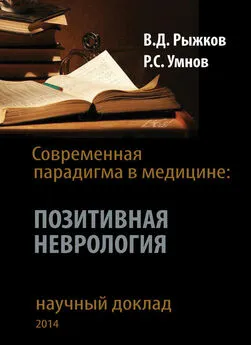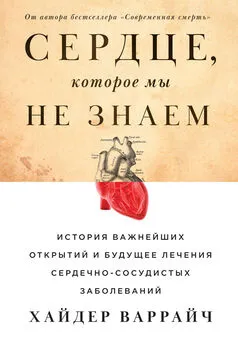Хайдер Варрайч - Современная смерть. Как медицина изменила уход из жизни
- Название:Современная смерть. Как медицина изменила уход из жизни
- Автор:
- Жанр:
- Издательство:Альпина нон-фикшн
- Год:2021
- Город:Москва
- ISBN:978-5-0013-9427-3
- Рейтинг:
- Избранное:Добавить в избранное
-
Отзывы:
-
Ваша оценка:
Хайдер Варрайч - Современная смерть. Как медицина изменила уход из жизни краткое содержание
По сравнению с серединой XX столетия радикально изменились все аспекты окончания нашей жизни — от чего мы умираем, когда умираем, где умираем и как умираем. В результате прогресса медицинской науки и медицинских технологий даже само определение смерти теперь формулируется иначе — что уж говорить о ее экологии, эпидемиологии, экономике и этике. Американская медицина прошла за это время огромный путь освоения новых подходов к смерти и умирающим — путь, на который в некоторых отношениях еще только предстоит вступить России. В своей дебютной книге доктор Варрайч рассказывает о сегодняшних ритуалах смерти и о ее современном языке — и на основе своего опыта лечащего врача в отделении интенсивной терапии крупной американской больницы задумывается о том, что лучше получалось у наших предков и в чем мы явно превзошли их.
Современная смерть. Как медицина изменила уход из жизни - читать онлайн бесплатно ознакомительный отрывок
Интервал:
Закладка:
361
Balboni TA, Balboni M, Enzinger AC, Gallivan K, Paulk ME, Wright A, et al. Provision of spiritual support to patients with advanced cancer by religious communities and associations with medical care at the end of life. JAMA. Intern Med . 2013; 173 (12): 1109-17.
362
Puchalski C, Romer AL. Taking a spiritual history allows clinicians to understand patients more fully. J Palliat Med . 2000; 3 (1): 129-37.
363
Lo B, Kates LW, Ruston D, Arnold RM, Cohen CB, Puchalski CM, et al. Responding to requests regarding prayer and religious ceremonies by patients near the end of life and their families. J Palliat Med . 2003; 6 (3): 409-15.
364
Sinclair S, Pereira J, Raffin S. A thematic review of the spirituality literature within palliative care. J Palliat Med . 2006; 9 (2): 464-79.
365
PRRI, Pre-Election American Values Survey.
366
Norenzayan A, Gervais WM. The origins of religious disbelief. Trends Cogn Sci . 2013; 17 (1): 20–25. 2012.
367
Zuckerman P. Society without God . New York University Press; 2008.
368
Norenzayan A, Gervais WM, Trzesniewski KH. Mentalizing deficits constrain belief in a personal God. PLoS ONE . 2012; 7 (5): e36880.
369
Paul GS. Religiosity tied to socioeconomic status. Science . 2010; 327 (5966): 642.
370
Bulow HH, Sprung CL, Baras M, Carmel S, Svantesson M, Benbenishty J, et al. Are religion and religiosity important to end-of-life decisions and patient autonomy in the ICU? The Ethicatt study. Intensive Care Med . 2012; 38 (7): 1126-33.
371
Curlin et al., Religious characteristics.
372
Smith-Stoner M. End-of-life preferences for atheists. J Palliat Med . 2007; 10 (4): 923-28.
373
Dennett D. The bright stuff. New York Times . July 12, 2003.
374
Pew Research Center. How Americans Feel About Religious Groups. www.pewforum.org/2014/07/16/how-americans-feel-about-religious-groups/. July 16, 2014.
375
Jones JM. Some Americans reluctant to vote for Mormon, 72-year-old presidential candidates: Based on February 9-11, 2007, Gallup poll. Gallup News Service. www.gallup.com/poll/26611/some-americans-reluctant-vote-mormon-72yearold-presidential-candidates.aspx. 2007.
376
Edgell P, Gerteis J, Hartmann D. Atheists as «other»: moral boundaries and cultural membership in American society. ASR . 2006: 71 (2): 211-34.
377
Gervais WM, Shariff AF, Norenzayan A. Do you believe in atheists? Distrust is central to anti-atheist prejudice. J Pers Soc Psychol . 2011; 101 (6): 1189-206.
378
Swan LK, Heesacker M. Anti-atheist bias in the United States: testing two critical assumptions. Secularism and Nonreligion . 2012; 1: 32–42.
379
Gervais WM. Everything is permitted? People intuitively judge immorality as representative of atheists. PLoS ONE . 2014; 9 (4): e92302.
380
Charles et al., Insights from studying prejudice [see «How We Learned Not to Resuscitate», note 37].
381
Zuckerman et al., Atheism [see «How We Learned Not to Resuscitate», note 38].
382
Shahabi et al., Correlates of self-perceptions.
383
Roberts et al., Factors influencing views of patients.
384
Collin M. The search for a higher power among terminally ill people with no previous religion or belief. Int J Palliat Nurs . 2012; 18 (8): 384-89.
385
Smith-Stoner, End-of-life preferences.
386
Smith-Stoner, End-of-life preferences.
387
Baggini J, Pym M. End of life: the humanist view. Lancet . 2005; 366 (9492): 1235-37.
388
Smith-Stoner, End-of-life preferences.
389
Wenger and Carmel, Physicians’ religiosity; Cohen et al., Influence of physicians’ life stances; Bulow et al., Are religion and religiosity important.
390
Vail KE III, Arndt J, Abdollahi A. Exploring the existential function of religion and supernatural agent beliefs among Christians, Muslims, atheists, and agnostics. Pers Soc Psychol Bull . 2012; 38 (10): 1288-300.
391
The World Health Organization Quality of Life assessment (WHOQOL): position paper from the World Health Organization. Soc Sci Med . 1995; 41 (10): 1403-9; JCAHO. Joint Commission on Accreditation of Healthcare Organizations. CAMH Refreshed Core, January, 1998.
392
Labbate LA, Benedek DM. Bedside stuffed animals and borderline personality. Psychol Rep . 1996; 79 (2): 624-26.
393
Cervenka MC, Lesser R, Tran TT, Fortune T, Muthugovindan D, Miglioretti DL. Does the teddy bear sign predict psychogenic nonepileptic seizures? Epilepsy Behav . 2013; 28 (2): 217-20; Schmaling KB, DiClementi JD, Hammerly J. The positive teddy bear sign: transitional objects in the medical setting. J Nerv Ment Dis . 1994; 182 (12): 725.
394
Stern TA, Glick RL. Significance of stuffed animals at the bedside and what they can reveal about patients. Psychosomatics . 1993; 34 (6): 519-21.
395
Adelman RD, Tmanova LL, Delgado D, Dion S, Lachs MS. Caregiver burden: a clinical review. JAMA . 2014; 311 (10): 1052-60.
396
Liu Y, Kim K, Almeida DM, Zarit SH. Daily fluctuation in negative affect for family caregivers of individuals with dementia. Health Psychol . 2014.
397
Rabow MW, Hauser JM, Adams J. Supporting family caregivers at the end of life: «they don’t know what they don’t know.» JAMA . 2004; 291 (4): 483-91.
398
Lynn Feinberg SCR, Ari Houser, and Rita Choula. Valuing the Invaluable: 2011 Update. The Growing Contributions and Costs of Family Caregiving . AARP Public Policy Institute; 2011.
399
Feinberg et al., Valuing .
400
National Alliance for Caregiving and AARP. Caregiving in the U. S . www.caregiving.org/wp-content/uploads/2015/05/2015_CaregivingintheUS_Final-Report-June-4_WEB.pdf. 2015.
401
National Alliance for Caregiving and AARP, Caregiving .
402
National Alliance for Caregiving and AARP, Caregiving .
403
Feinberg et al., Valuing .
404
Hurd MD, Martorell P, Delavande A, Mullen KJ, Langa KM. Monetary costs of dementia in the United States. N Engl J Med . 2013; 368 (14): 1326-34.
405
Hurd et al., Monetary costs.
406
Schulz R, Beach SR. Caregiving as a risk factor for mortality: the Caregiver Health Effects Study. JAMA . 1999; 282 (23): 2215-19.
407
Pochard F, Azoulay E, Chevret S, Lemaire F, Hubert P, Canoui P, et al. Symptoms of anxiety and depression in family members of intensive care unit patients: ethical hypothesis regarding decision-making capacity. Crit Care Med . 2001; 29 (10): 1893-97.
408
Cochrane JJ, Goering PN, Rogers JM. The mental health of informal caregivers in Ontario: an epidemiological survey. Am J Public Health . 1997; 87 (12): 2002-7.
409
Prigerson HG, Jacobs SC. Perspectives on care at the close of life. Caring for bereaved patients: «all the doctors just suddenly go.» JAMA . 2001; 286 (11): 1369-76.
410
Christakis NA, Allison PD. Mortality after the hospitalization of a spouse. N Engl J Med . 2006; 354 (7): 719-30.
411
Emanuel EJ, Fairclough DL, Slutsman J, Alpert H, Baldwin D, Emanuel LL. Assistance from family members, friends, paid care givers, and volunteers in the care of terminally ill patients. N Engl J Med . 1999; 341 (13): 956-63.
412
Gallicchio L, Siddiqi N, Langenberg P, Baumgarten M. Gender differences in burden and depression among informal caregivers of demented elders in the community. Int J Geriatr Psychiatry . 2002; 17 (2): 154-63.
413
Vincent C, Desrosiers J, Landreville P, Demers L, group B. Burden of caregivers of people with stroke: evolution and predictors. Cerebrovasc Dis . 2009; 27 (5): 456-64; Salmon JR, Kwak J, Acquaviva KD, Brandt K, Egan KA. Transformative aspects of caregiving at life’s end. J Pain Symptom Manage . 2005; 29 (2): 121-29.
414
Steadman PL, Tremont G, Davis JD. Premorbid relationship satisfaction and care-giver burden in dementia caregivers. J Geriatr Psychiatry Neurol . 2007; 20 (2): 115-19.
415
Burton AM, Sautter JM, Tulsky JA, Lindquist JH, Hays JC, Olsen MK, et al. Burden and well-being among a diverse sample of cancer, congestive heart failure, and chronic obstructive pulmonary disease caregivers. J Pain Symptom Manage . 2012; 44 (3): 410-20.
416
van Exel J, Bobinac A, Koopmanschap M, Brouwer W. The invisible hands made visible: recognizing the value of informal care in healthcare decision-making. Expert Rev Pharmacoecon Outcomes Res . 2008; 8 (6): 557-61.
417
Kelton Global. The Conversation Project National Survey.theconversationproject.org/wp-content/uploads/2013/09/TCP-Survey-Release_FINAL-9-18-13.pdf. 2013.
418
Daitz B. With poem, broaching the topic of death. New York Times . January 24, 2011.
419
Dying Matters Coalition Survey. comres.co.uk/poll/669/dying-matters-coalition-survey-of-gps-and-the-public.htm. 2012.
420
Forrow L. The «4 R’s» of respecting patients’ preferences. www.boston.com/lifestyle/health/mortalmatters/2013/09/the_4_rs_of_respecting_patients_preferences.html. 2013.
421
Kutner L. Due process of euthanasia: the living will, a proposal. Indiana Law Journal . 1969; 44 (4): 539-54.
422
Annas GJ. The health care proxy and the living will. N Engl J Med . 1991; 324 (17): 1210-13.
423
La Puma J, Orentlicher D, Moss RJ. Advance directives on admission. Clinical implications and analysis of the Patient Self-Determination Act of 1990. JAMA . 1991; 266 (3): 402-5.
424
Butler M, Ratner E, McCreedy E, Shippee N, Kane RL. Decision aids for advance care planning: an overview of the state of the science. Ann Intern Med . 2014; 161 (6): 408-18.
425
Интервал:
Закладка:










